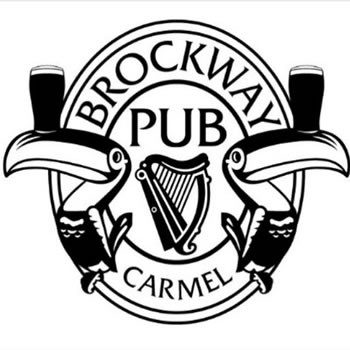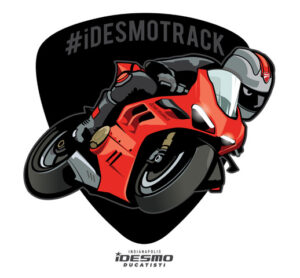 Welcome to Ducati (and other motorcycle 😊) ownership. Motorcycles can be a blast to ride…twisting the throttle through corners is a feeling that is hard to replicate in other sports. Riding bikes at speed in a controlled environment is an awesome and fun way to learn what your bike can do; and share the fast fun with others. The track is used in multiple ways – racing, practice for racing, riding hard with less limitations that you would encounter on the street, and continually improve overall riding skill so there is more confidence when riding on the street.
Welcome to Ducati (and other motorcycle 😊) ownership. Motorcycles can be a blast to ride…twisting the throttle through corners is a feeling that is hard to replicate in other sports. Riding bikes at speed in a controlled environment is an awesome and fun way to learn what your bike can do; and share the fast fun with others. The track is used in multiple ways – racing, practice for racing, riding hard with less limitations that you would encounter on the street, and continually improve overall riding skill so there is more confidence when riding on the street.
The purpose of this Q/A is for those folks looking to begin tracking or racing their bike and to help them get started. I remember my first day at the track – preparing, the nervousness, and not knowing what to expect. I’m hoping this will help folks to prepare.
What should I expect from a motorcycle track day or race day?
Track day
A track or race day is a great way to take your motorcycle in a closed and controlled environment and work on your riding skills – you don’t have to worry about poor road surfaces, speed limits, or oncoming traffic. You’re able to ride and concentrate on honing your riding abilities. Track day organizations have coaches. These coaches are available for help in terms of what to focus on while on the track and can work with you one-on-one if you’d like. All coaches like to show their value by helping others to progress and they’re available at track days to do that. Track days are run on a schedule in different groups depending on the level of speed/experience – Advanced, Intermediate (some orgs have broken this up into Intermediate 1 and 2), and Novice. If this is your first time at the track the recommendation is to start within Novice. Even if you’re experienced on the street; track riding can be a different experience and starting within Novice is a good way to learn the lay of the land, work on aspects of riding on the track, and work on increasing your speed safely. There should be no ego in terms of learning – it’s best to start on the fundamentals of riding on the track as you increase your speed.
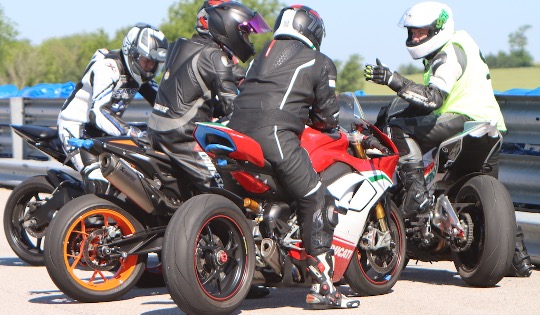
All track day organizations have rules around their groups and what should be done in terms of bike preparation. Novice is the most open in this regard. Just ensure you’re following the preparation rules for the organizations.
Racing
Race day organizations have schools that you can get one-one instruction in, learn the race rules, practice on the track, and obtain your license to go racing. With these schools you will have on track and off-track learning. To some the thought of racing can be scary, but it really doesn’t have to be. In the end you ride your race, your speed, your level of risk. Do you want a trophy? Sure…we all do, but not at the expense of exceeding your level of risk. Schools are an excellent way to start, get the feet wet, and have conversations off track with instructors. Many of these instructors have been racing for decades with a lot of experience and enjoy guiding new racers into doing what is best for each new racer and for the racing community overall.
Race schools have one group, the school itself however many of them group individuals according to their skill level or speed within the group. There would be a head instructor and then a few coaches. The entire team would work with you and others to develop their skills on and off track.

All race schools have rules around their school and what should be done in terms of bike preparation. Ensure you’re following the preparation rules for the race organization. The number of items completed to your bike generally is more than a typical Novice track day group, but it’s not onerous and is to keep you and others safe on the track and in the race.
Racing may seem intimidating, but race schools and racing have a lot of advantages. I can honestly say I’m faster in a race than in practice or at a track day. There also is a lot of comradery in the paddock – you are with folks with like minds, cool bikes, and with the need to always become better. You learn safe passing skills and getting the most out of your bike to get a certain position. You’re competing with others, but you do you. The skills and speed come as you develop your skillset.
Schools
There are dedicated schools that teach all aspects of track riding and potentially racing. These schools are also wonderful ways to get started as they will teach you before the bad habits settle in, usually have bikes you can rent/use, and have gear you can rent/use. It is a good way to get introduced to track riding with little or no equipment.
There are two schools that iDesmo folks have used. They both have different methods in their teaching styles, but they provide the same result in the end – a better and safer track rider/racer. You’ll want to review the links below and use the information provided within their sites to determine which may be best for you. They both visit different tracks as well. I personally have been in both schools…you can’t go wrong with either. They both are great ways to learn.
What do I need to have for a first motorcycle track or race day?
- Your motorcycle – prepped to the rules of the organization you’ll be running in. No one truly needs a “track bike” when starting. Your street bike is fine – just ensure you have prepped it according to the rules of the organization you’ll be at. As an example, most organizations would want your mirrors/lights taped. Your street tires would be fine, but you’ll want to adjust to starting psi based on the tire manufacturer’s recommendations for track use.
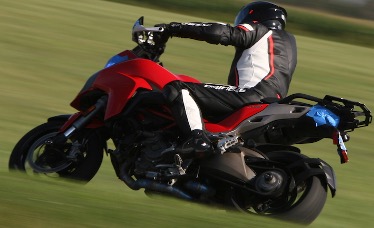
- Gear – helmet, gloves (gauntlet are best, and some orgs require that in Novice), boots, and two piece or one-piece suit. Ensure you read the rules of the organization you’ll be running in. Some orgs allow a non-leather-based riding suit for Novice, but ensure you read their rules first. If you already have a leather jacket with a zipper, you can obtain leather pants from that manufacturer to match. In the end you’ll want to be as protected as possible.
- Canopy – would be nice to have to shield you from the sun during the day. Sunscreen and a couple of chairs would be good as well.
- Food/drinks – important to be hydrated and not hungry. Some tracks have food to buy during lunch, but always be prepared in case there isn’t something to eat at the track.
- Bring a 3–5-gallon jug of gas for your motorcycle.
- Be familiar with the schedule. Both race and track days have printed and online schedules. Be very familiar with both. You don’t want to miss registration/tech, your session, school, or race.
What organizers do we have locally to us and what tracks?
Track day
- Closest track for those in or around the Indianapolis area are Putnam Park (Race Track Indiana | Car Racing Track Near Indianapolis | Putnam Park Road Course). This track is a great track to learn on – fast, flowing, with plenty of runoff.
- National Corvette Museum (NCM Motorsports Park | NCM Motorsports Park). This track is a bit more challenging than Putnam with blind corners and multiple elevation changes.
- There are three track day organizers that go to these tracks:
All three are great opportunities to get on the track. They all have different methods to get registered, so you’ll want to refer to each one of their pages for rules and registration information.
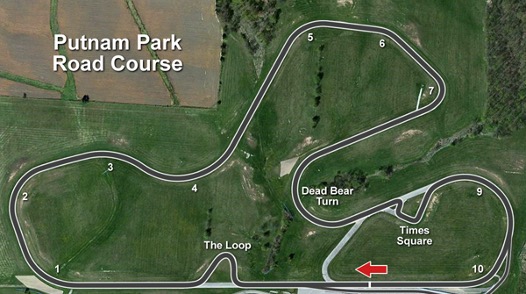
Racing
Closest tracks for those in or around the Indianapolis area are:
- Gingerman (GingerMan Raceway)
- Grattan (Grattan Raceway | Grattan Race Track (grattanracewaypark-mx.com))
- Blackhawk (Home – Blackhawk Farms)
- Autobahn (Autobahn Country Club – Midwest Premier Motorsports Club – Autobahn Country Club (autobahncc.com))
There are three race organizers that go to these tracks and have schools available for learning and licensing:
- AHRMA (AHRMA Academy of Roadracing – AHRMA)
- CCS/ASRA (ASRA – Championship Cup Series (asraracing.com))
- WERA (WERA Motorcyle Road Racing :: Home :: v2023n1x12 ::)
I personally race with all three of these organizations and they all have schools. Some go to different tracks than others, so you’d want to consult their schedules to ensure which one you’d go to. They also have different class structures so you’d want to consult their rulebooks on where your bike would fit. All three have twins classes. V4 would belong within CCS/ASRA or WERA. I coach with the AHRMA race school and would be happy to help you get started in being enrolled as well as help on the track.
What do I need for a track or race day motorcycle?
Really any motorcycle will do for starting out. The amount of prep you do is based on the group you would run in. Novice has the least amount of prep. Racing or more advanced groups have more prep. You’d want to refer to the rules of the track and race day organizations to ensure they are being followed, the below is a short list.
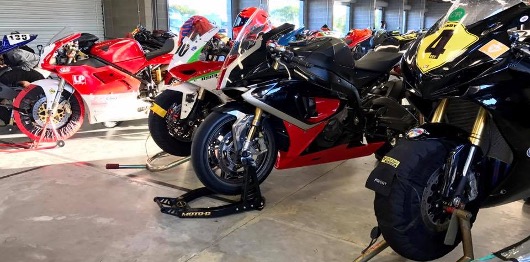
- Tape off any lenses on your motorcycle – headlights, taillights, and turn signals should be taped up or removed. Painter’s tape is best for that.
- Remove your license plate – most organizations require that.
- Coolant – read the organizers rules on this to ensure that you are following the rules. Regular coolant tends to be ok for Novice, but as you move up you are required to replace with water.
- Tire pressure – you can ask track day organizers or coaches for what starting pressures should be. If this is your first day, you can use your street tires but would want to adjust the starting pressures to be optimal for the track. You don’t need fancy tires to start out.
What do techs look for during the tech inspection?
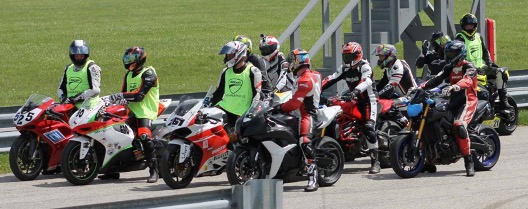 Read the rules of the organization to ensure your bike and gear is prepped before getting to the track. Below are links to rules for the organizations mentioned.
Read the rules of the organization to ensure your bike and gear is prepped before getting to the track. Below are links to rules for the organizations mentioned.
- Fast Line Track Days: Tech Requirements – Fast Line Track Days
- CarrMoto: May 28 Track Day (motorsportreg.com)
- Sportbike Track Time: STT Tech Requirements (sportbiketracktime.com)
- AHRMA: AHRMA Handbook 2023 – AHRMA
- CCS/ASRA: FAQ – ASRA (asraracing.com)
- WERA: WERA Motorcyle Road Racing :: Rulebook :: v2023n1x12
No leaking fluids, no lose anything, and brakes need to be in good order.
How do I get my motorcycle there?
- You could ride it assuming it is a street bike with street tires. Just remember you’d likely want food, chair, and something for the sun to come with you which would be hard to bring on a motorcycle.
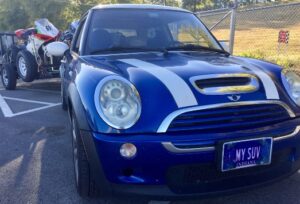
- A trailer or rent a U-Haul trailer.
- Tag team with another person who has a trailer. Plenty of iDesmo folks have trailers and bring them to the track for their bikes. Part of the best experience of a track day is the comradery.
What type of expense am I looking at?
Depending on the organization and track this can cost anywhere from $150 – $300 per day. Add some $ in the price of gas for your motorcycle and your vehicle to get there, plus food/water expenses.
You can add price for tires and potentially for aftermarket suspension but those really aren’t needed as much (beyond setting the current suspension for your weight) when you’re beginning. As Ken Hill a prolific race craft instructor says on his pod cast – most sport-based motorcycles from the factory are ready to go on the track with the tires and suspension they already have. You just need to tweak them for your weight/riding style and ensure the tire pressures are set properly for track use.
Are motorcycle track days and racing worth it?

For sure! I’m biased, but it will be the most fun you’ll have on a motorcycle. Street riding can get you so far, on the track you really can unleash your motorcycle and begin to learn its limits. With that said, you want to work on fundamentals and build speed as those fundamentals become sounder for you. It’s easy to go fast until you see that first corner. Better to learn the riding at pace fundamentals and do it safely.
I have more questions, who can I reach out to?
I’d be happy to help answer questions for anyone wanting or thinking about racing or getting on the track. You’re welcome to reach out to via Facebook message or email at bberbeco@hotmail.com. It would be great to see you out there enjoying all the performance your bike has to offer.


